In an attempt to distract myself from today's headlines, here's a summary of my two week stay in the highlands, looking for the rare and elusive pine hoverfly. Sadly I wasn't able to find any pine hoverflies, I suspect the terrible weather last week may have played a part, but it was always going to be a difficult challenge, so I'm not too down-hearted. Instead of dwelling on what I didn't see, I'll focus on all the fantastic wildlife I did see - I've already mentioned such wonderful creatures as the bumblebee robberfly and the pine tree munching longhorm
Rhagium inquisitor in my previous
post, but there's a lot more to come.
Last Saturday the weather finally came good, just in time for a trip over to the RSPB's Crannach reserve to do a bit of surveying, alongside a lovely group of like-minded people who'd gathered for a fascinating workshop on wood ant identification. Unsurprisingly ants were high on the agenda, and we found a nice range of species, including one of the two Scottish species of wood ant,
Formica lugubris, the hairy wood ant. Other insects included the luridly green sawfly Rhogogaster punctulata, and I was delighted to find one of the hoverflies I swept from the flowery tracksides turned out to be
Xanthandrus comtus, a scarce species in Scotland.
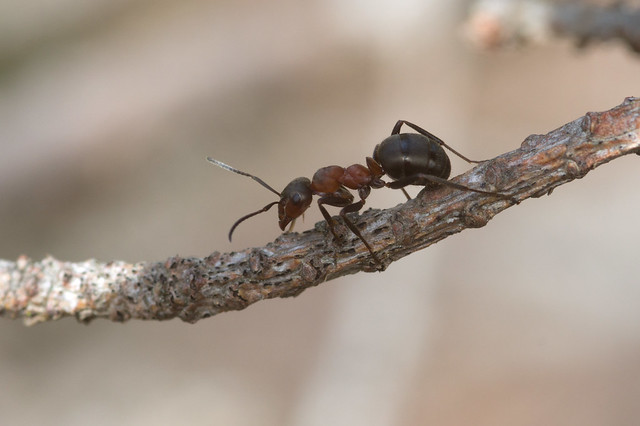 |
| A (very subtley) hairy wood ant |
Undoubtedly the star of show from a purely personal point of view were the bright orange small pearl-bordered fritillaries that were fluttering over a area of boggy ground, settling only occasionally to allow a few poor photographs. In the nutrient poor environment, some plants have turned to predation, both round-leaved sundew and common butterwort were common across the site. Hopefully between all of us, we'll have added a decent amount of knowledge about the species that make this remote site their home, and help inform its management for the future.
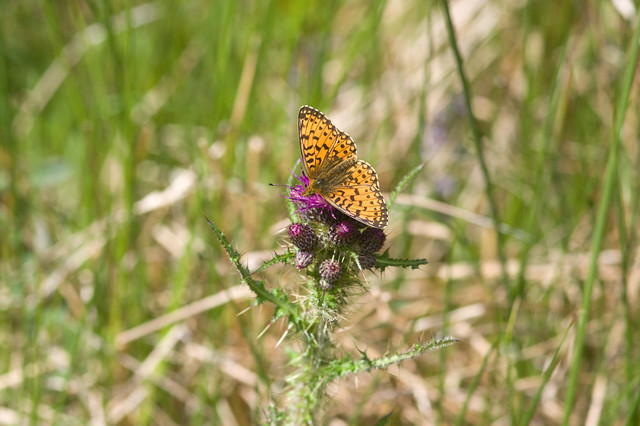 |
| Small Pearl-bordered Fritillary |
 |
| Round-leaved Sundew |
After that it was back to the grind of searching for pine hoverflies, I've spent a lot of the last week staring at rowan flowers! Even if they didn't lure in the hoverfly I wanted, they did attract a lot of other interesting species. Over the course of the week I saw at least 12 species of hoverfly on the rowans, as well as several other species on other flowers nearby, and excitingly a small number of the nationally scarce (and adorable) little hoverfly
Microdon analis at one of the sites. It wasn't only hoverflies though, I also spent a long time scratching my head at an oddly marked longhorn beetle, which after a bit of online discussion was agreed to be an extremely dark variant of the common northern species
Judolia sexmaculata.
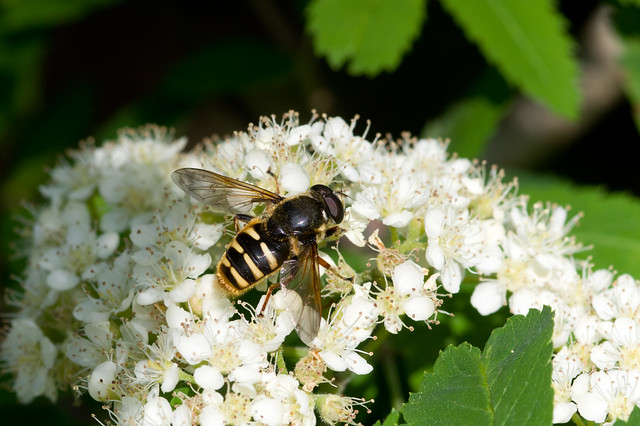 |
| Sericomyia silentis - one of the most impressive species seen on the Rowan flowers |
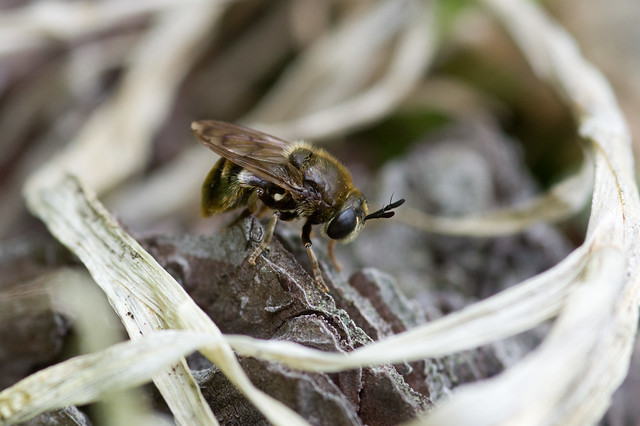 |
| The adorable Microdon analis |
 |
| A very odd looking Judolia sexmaculata |
Whilst the majority of my time was spent in the quest for pine hoverflies, I did take a couple of side trips to try and see some other highland specialities, thankfully with more success! A trip on a cloudy and rainy afternoon to a site near Grantown-on-Spey produced three male and one female Aspen hoverfly, another highly endangered specialist, which is a bit easier to find than its pine compatriot. On a sunnier day I took a short detour onto the RSPB's Abernethy reserve and was rewarded with a brief sighting of the pinewood mason bee,
Osmia uncinata, foraging from bird's foot trefoil, as well as the bonus of the pinewood specialist hoverfly
Didea intermedia.
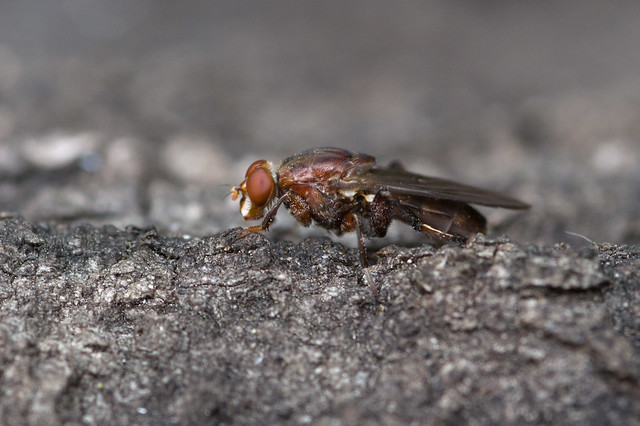 |
| Aspen Hoverfly - another hoverfly that doesn't look much like one |
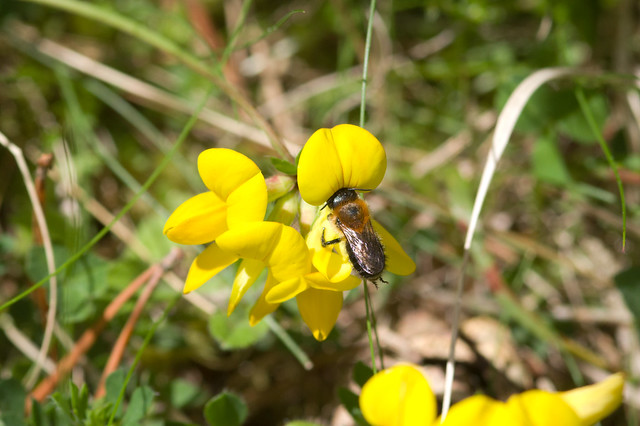 |
| Pine Mason Bee, Osmia uncinata |
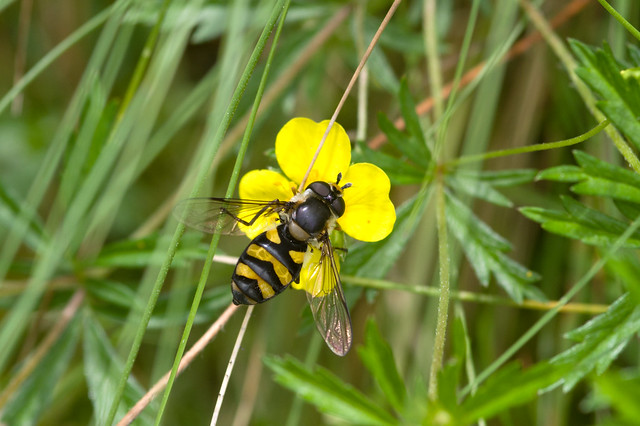 |
| Didea intermedia |
Whilst my time in Scotland hasn't always gone exactly according to plan, it's still been a fascinating couple of weeks, and if anything it's cemented my love of natural history even further. I'm looking forward to continuing to learn more and more about the fascinating wildlife of this country, and to continuing to develop a more detailed knowledge of the hoverflies that have been my focus this year.









No comments:
Post a Comment